My lovely baby girl is 18-months-old today.
Around her first birthday, I started managing crippling abdominal pain. The pain stops me in my tracks and wakes me in the middle of the night. Causes me to double over, grimacing and sweating while I wait in line at the grocery store; somehow still managing to dangle something – anything -- in front of my daughter’s face to keep her content for Just. Five. More. Minutes. Yet another attempt to stave off the piercing scream that marked her entry into this world and continues to sound out throughout each day to signal hunger, sleepiness, boredom, displeasure, disapproval…
My soul was not prepared to withstand the overwhelming amount of adoration and responsibility that accompanied my daughter's birth. I remain unstable. Many days I’m convinced that I will feel this way for the rest of my life. I often marvel at the fact that we are only at the very beginning of this journey together. Down the road remains teaching her how to ride a bike, helping her with math homework (ahem, learning how to do math), and holding her close when someone breaks her heart. Once you enter motherhood you can’t turn back. We are forced to evolve at someone else’s pace and keep up, keep up, keep up.
And I want to be the best. Mostly because I want her to be the happiest, healthiest person that ever was. Also, selfishly, I want her to love me as much as I love her.
But I digress -- back to the stomach pain. For months I’ve endured this pain. Most days I thought it would go away on its own. Some days I thought it was a sign of a heart attack. At some point, I think I just accepted that living with chronic pain was my new reality.
The truth is that between keeping a relatively new job, keeping a relatively neat home, keeping my husband relatively happy, toddler giggles, first steps, “Goodnight Moon,” changing diapers, changing clothes, filling bottles, cleaning the cat litter, feeding the dog, “Twinkle, Twinkle,” Doc McStuffins, breakfast, lunch, dinner, and “MOMMY!,”I just didn’t have time to figure out what was happening to me. There were never enough hours in the day to genuinely check “Take care of me” off of my to-do list.
My body showed evidence of this, too. Post the initial breastfeeding weight loss, I’d put on some weight. I ate whatever was nearby without thinking. My grad school days of eating only raw food, cognizant of the intentionality of food consumption as fuel for my body, soul, and mind, were long gone.
Then one day I sat in a meeting, pain searing through my stomach to my back and radiating down both sides of my ribcage. The room was fuzzy. I couldn’t focus on my colleague’s words. I could only focus on taking shallow breaths and contorting my body in just the right way to make it through this flare-up. I was finally fed up. I made my first appointment with my doctor.
As of today, I’ve had several appointments with specialists, including the one where they stick a camera down your throat. Nothing has been named. No plan for healing identified. No relief in sight. The ‘diagnosis’ does not ring true with my experience. I called my gastroenterologist the day after that procedure, failing to hide my lack of faith in his opinion, “This is not acid reflux. I was pregnant about a year ago. I know acid reflux intimately.”
A month ago, I started seeing a Chinese Medicine practitioner. She is convinced that the pain is related to food sensitivities and digestive disturbances, and I’m inclined to believe her. After some changes in my diet and the addition of some digestive herbs, I feel better. I’m not 100%, or even 85%, but I feel better.
During our second meeting, she did fire work over my body as she walked me through a guided meditation. This was the start of the shift to less pain. I felt at peace. As she closed the session, she shared what she’d learned about me that day. Four words rolled off of her tongue that will stick with me for the rest of my life, “Your heart is depleted”.
Having met the love of my life just a year or so prior, I could not fathom that this was true. My heart had never felt more full. The rewards of motherhood outweighed the pains every day -- not every moment, but definitely every day. She continued to tell me that I needed to find time to connect with other grown-ups – to laugh, to dance, to escape the to-do list.
I’d been so wrapped-up in giving all of me to my family, to my daughter, that I’d opted to endure a life full of pain just to keep doing it for her. My healer went on to explain that in the end, that choice would only be hurting my little girl as she would get a lesser version of her mother. I’m certain I’d heard this once or twice before, but it's so easy to get sucked in without even realizing it.
This time the light bulb went off. To help create the happiest, healthiest person ever, and even to achieve the impossible of having her love me as much as I love her, I have to make time for self-care. And, every once in a while, I have to attempt to define my health and happiness as separate from hers. I imagine this will be something I will have to remind myself of often.
The spa day is scheduled. I’ll keep you posted.
















